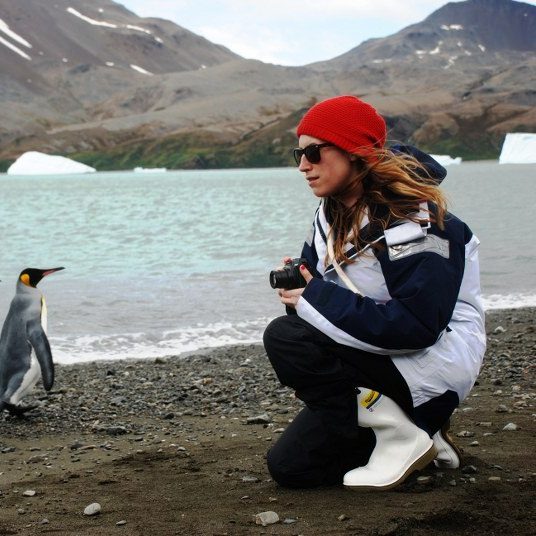
Overtourism, natural disasters, and routine maintenance are good reasons to steer clear of areas that need a little rest and recovery. Here are a few destinations you should save for a later date.


Overtourism, natural disasters, and routine maintenance are good reasons to steer clear of areas that need a little rest and recovery. Here are a few destinations you should save for a later date.
If you have been on the internet in the last month, you’ve probably been bombarded with at least a thousand lists of where to go, what to do, and what to eat in 2024. But what about where not to go?
Responsible tourism can be a huge boon for local economies, so we’re not here to tell you to avoid whole cities or countries just because they’re getting too popular. But sometimes, natural places need a little vacation from us. These parks and trails are closed until further notice, or are currently experiencing serious environmental or humanitarian concerns. If one of these spots has been on your list for years, consider hitting the pause button before booking tickets.
If you’ve got your heart set on an outdoor recreation destination that can’t support visitors right now but you still want to scratch the itch, it is possible to find similar destinations that would be happy to have you visit. Just start by calling park visitor centers or city and state tourism offices, who are generally happy to point travelers toward the less-beaten path. Local guides and outfitters can also take you to the best, most underrated views—safely.
So, without further ado, let’s get into it and learn about the destinations that shouldn’t be on your 2024 list. And before you get bummed, remember, that part of being a responsible traveler means sometimes knowing when, and where, not to go. Much like Fodor’s “No List,” states, think of this as a chance to honor specific well-loved places so that we can love them well into the future.
Significant volcanic activity has been disrupting life in the Reykjanes Peninsula of Iceland, a short drive away from the city of Reykjavik and the ever-popular Blue Lagoon. Sure, it could be super-cool to see a volcanic eruption up close, but unless you happen to be a volcanologist, it’s probably better to play it safe and watch this one from afar. Icelandic officials have announced that another eruption is likely imminent, and have asked tourists to stay well clear of the volcano until further notice. The rest of the country, however, is open—and for flights in and out of the country’s main airport, so far, it’s been business as usual.
Hawai’i’s parks are still recovering from volcanic activity too. In Hawai’i Volcanoes, a challenging trail with two backcountry cabins has been partially closed due to volcanic damage. You can hike up to Red Hill Cabin, but no further. You can find a full list of closures and trail advisories in US National Parks here. (For a continental US volcanic adventure, New Mexico’s Valley of Fires doesn’t disappoint.)
Bandelier is easily one of the most underrated public land destinations in the United States. Here, you can visit cliff dwellings carved by hand by Ancestral Pueblo peoples many hundreds of years ago and visit well-preserved archaeological sites. Most of the park is open to visitors right now, but the Tsankawi area is closed for construction until further notice—likely until summer 2024. It’s well worth a trek once it reopens, however. Tsankawi trails follow paths worn into the stone by hundreds of years of footfall, and it’s an incredible place to visit.
Once seen as the pinnacle of physical achievements, Everest is now a bit ho-hum. If you have money (and lots of it), you can climb it—but you may be putting lives in danger in the process. Additionally, political tensions surrounding the mountain’s borders and the shit—literal and metaphorical—piling up on the mountain are reason enough to give “the world’s rooftop” a little break. Check out other, lesser-known nearby Himalayan treks instead.
In early 2023, a devastating tree disease, phytophthora ramorum, ravaged the larch trees in this beloved bike park in north Wales. As a result, the park was required to clearcut the forest to prevent the sickness from spreading. It’s still unclear whether the park will be able to reopen in the future, once the damage to the forest has been mitigated.
One of the most popular trails in one of the most-visited US national parks will be closing soon for serious improvements—and may be closed for over a year and a half, double-check park alerts before setting off for views of the trails’ 80-foot waterfall. You may want to consider an alternate trail plan anyway, as the trail gets an average of over 1,000 hikers a day according to visitation stats.
***
Adventure.com strives to be a low-emissions publication, and we are working to reduce our carbon emissions where possible. Emissions generated by the movements of our staff and contributors are carbon offset through our parent company, Intrepid. You can visit our sustainability page and read our Contributor Impact Guidelines for more information. While we take our commitment to people and planet seriously, we acknowledge that we still have plenty of work to do, and we welcome all feedback and suggestions from our readers. You can contact us anytime at hello@adventure.com. Please allow up to one week for a response.

Kassondra Cloos is a travel journalist from Rhode Island living in London, and Adventure.com's news and gear writer. Her work focuses on slow travel, urban outdoor spaces and human-powered adventure. She has written about kayaking across Scotland, dog sledding in Sweden and road tripping around Mexico. Her latest work appears in The Guardian, Backpacker and Outside, and she is currently section-hiking the 2,795-mile England Coast Path.







Can't find what you're looking for? Try using these tags: